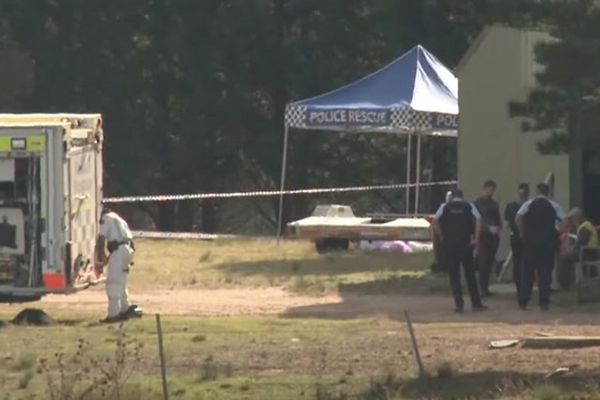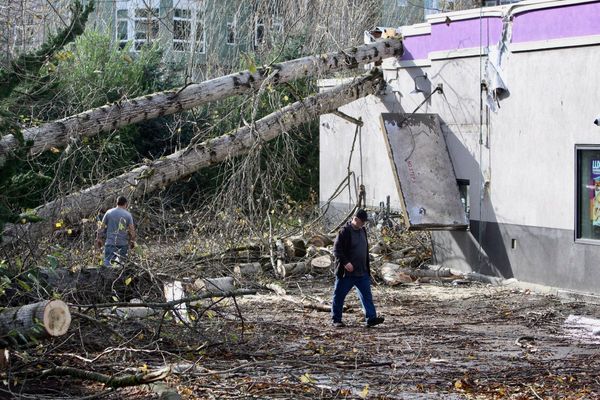
Soon after her son, Antonio, was born, Marzia Caccioppoli moved to Casalnuovo di Napoli, a town surrounded by countryside on the outskirts of Naples, to get away from the chaos and pollution of the sprawling southern Italian city.
“Antonio was a strong and healthy boy, but I wanted him to grow up in a place where he could breathe clean air,” she said.
The decision, however, proved to be fatal. It was 2003 and Caccioppoli had unwittingly moved to the so-called “triangle of death”, a vast area to the north-east of Naples where the mafia had established the lucrative business of burying, dumping and burning toxic waste, in turn poisoning swathes of farmland and drinking water.
Rather than living the long and wholesome life his mother had dreamed of for him, Antonio was dead by the time he was 10.
The illegal waste dumping, often carried out in cahoots with local police and politicians, was made public by a mafia turncoat in the late 1990s, around the time the early signs of its effects started to appear: first the farm animals born with deformities, then the anomalous rise in cancer cases, especially rare forms of the disease among children.
But the deeply rooted racket, which over time has had devastating repercussions on health, the environment and livelihoods, has never been adequately dealt with, whether by local, regional or national authorities.
That could be about to change. Caccioppoli was among the 41 plaintiffs who took a case against the Italian state to the European court of human rights, where judges recently ruled that despite long being aware of the issue, successive governments had failed in their duty to tackle the crisis. As a result, residents in the affected area, comprising 90 municipalities with a population of almost 3 million, had been denied their “right to life”.
The Strasbourg-based court has given Italy two years to compile a strategy to resolve the issue, including setting up an independent monitoring mechanism and a public information platform.
Caccioppoli got an inkling that something was amiss in Casalnuovo when she noticed more death announcements appearing on walls in the town.
“They were people in their 30s or 40s,” she said. “Then there was the funeral of a child, who I later found out had cancer. I started to hear of more and more people getting cancer.”
Antonio was nine when she noticed a spasm in his leg, and after visiting several medics, he was diagnosed with glioblastoma multiforme, an aggressive brain cancer that most commonly affects older adults. He died in June 2013.
Later that year the government enacted its first decree to address the matter. Called “the land of fires”, this was a plan to map and decontaminate the affected land.
While some progress was made, toxic waste continued to be buried or burned. As cancer cases rose, some government ministers blamed it on the way of life of those living in the area.
The link between the higher cancer rates and pollution was finally confirmed by Italy’s higher health institute (ISS) in 2021. An ISS report in 2023 showed the death rate in the area was 9% higher than in the rest of the Campania region, with people facing a much greater risk of dying from malignant tumours and respiratory diseases.
Giorgia Meloni’s government is yet to officially respond to the ECHR ruling, but during a meeting with parliament’s eco-mafia committee last week, the environment minister, Gilberto Pichetto Fratin, acknowledged the state’s shortcomings in dealing with the issue while broaching the prospect of appointing a commissioner.
There has been no official response from authorities in the Campania region either, although one councillor claimed the toxic waste dumps were “a thing of the past”.
“The silence stinks more than the rubbish,” said Alessandro Cannavacciuolo, an environmental activist who was the first plaintiff to sign the complaint presented to the ECHR. “Half of my family has been decimated by cancer. I wouldn’t wish that upon anyone. The ruling is a strong development, but now we don’t want press releases, we want facts. We can’t afford to wait another 20 years.”
It only takes a visit to the area to witness the scale of the problem.
Mounds of rubbish line the roads on the outskirts of nearby Acerra, containing everything from construction waste, including asbestos, and plastic used in car production to electrical cables, clothes and general municipal waste. The stench of recently burned piles lingers.
Antonietta Moccia, whose daughter, Miriam, 18, lives with a rare brain cancer diagnosed at the age of five, regularly monitors the situation. “Politicians say it’s being cleaned up, but it’s clearly not true,” she said. “If the environment is sick, then we are sick. Here, they truly profit from our blood.”
The business is thought to have begun in the 1980s, when companies in the industrial north, or even Germany, would pay the Camorra mafia to dump their hazardous waste at a fraction of what it would have cost them to dispose of it legally.
The Mafia turncoat Carmine Schiavone revealed the illicit enterprise to the journalist Marilena Natale in 1997. “It continues to happen today, all they’ve done is change the route,” said Natale, who has had police protection since 2017 because of threats from the mafia. “For example, the waste is now being transported to Tunisia. It’s a vicious cycle.”
Valentina Centonze, Armando Corsini and Ambrogio Vallo were among the team of lawyers who came together for the case, working for free on behalf of the plaintiffs.
All their families have been touched by cancer, while Vallo takes a barrage of medication each day for a brain tumour.
Centonze said: “The state not only failed to resolve the problem, but also omitted to provide knowledge and information [to the public] about the phenomenon – this is another important fact of the ruling.”
The issue is not confined to Campania. Centonze said: “This ruling sets a precedent that can be applied in all the other places in Italy where there is a problem with waste dumping and the inertia of administrations to deal with it.”
Natale, who fostered a child with cancer, believes the ruling has come too late, and that the problem is too big to resolve. “It’s a mockery,” she said. “So we can sue the government but it won’t give us back our dead children.”
The Santobono Pausilipon paediatric hospital in Naples sits on the Posillipo hill, with views overlooking Mount Vesuvius. Over the past 20 years, it has become the last port of hope for children with cancer and their families from across Campania. The hospital treated 108 new cancer patients in 2024, eight of whom have died since the beginning of the year.
“Most come from the affected area,” said Anita Antignano, a cardiologist at the hospital who was also diagnosed with cancer in 2021. “Two patients arrived recently in quite a serious condition, which demonstrates the extent of the problem. While they try to clean up the land, the hospital needs to be reinforced with more staff, more equipment, and more funds. We need to be better equipped to save lives, but also to help those who survive and have to live with the consequences, and to work on prevention.”







